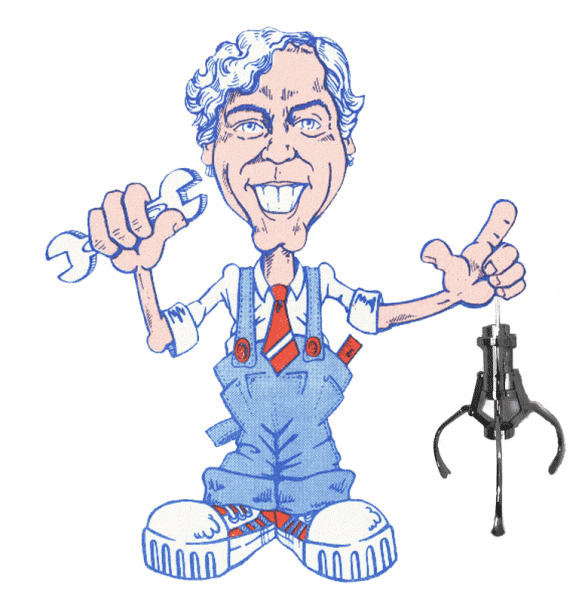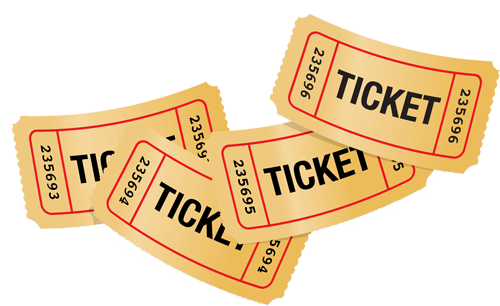
Ask Frank ‘ the Crank’ Seninsky
 Benchmark’s Monster Drop Games ‘Error 4’
Benchmark’s Monster Drop Games ‘Error 4’
(Dave Forlano, Alpha-Omega Super Tech)
Error 4 can be caused by a number of different communication errors, but the most common symptom I come across is from the Benchmark triple ticket dispensers. I often discover a broken pin on the communication connector that sits on the bottom of the ticket dispensers and is mounted to the ticket pcb. The broken pin is most often caused by human error with sloppy ticket refilling. The solution is a simple fix that takes only a couple of minutes.
The first step is to cut off most of the remaining part of the broken pin on the black surface mount but leave 1/8th inch of the exposed pin remaining.
I like to “pre make” connectors about 3 inches in length that I simply solder one end onto the 1/8 inch of the pin. Then splice the other end to the associated factory plug (typically blue and gray wires that go to the ticket dispensers). DON’T mix these wires up. Conform to the other stations wiring code.
NOTE: This is not the 4 pin ticket dispenser standard connector with power, notch and enable wiring.
ALWAYS REMEMBER: NEVER PLUG OR UNPLUG THESE COMM CONNECTORS WHILE GAME IS POWERED UP.
Result: No More “Error 4”
Multi-Color Dreaming LED Strips Help Increase Game Revenues
(Jason Franicevich, Laser Tag of Metairie)
Installing dreaming LED strips is as easy as replacing the rope lighting except the strips are plugged into a controller that allows the colors to flash and change in multiple patterns that attract customers from far across the room. All it takes is about $200 in parts (slightly more if dreaming strip length is more), a little soldering skill, and one hour of labor:
- 2 dreaming LED strips @ $75 ea (length?) $150
- 1 controller $ 20
- 1 power supply 8-10 amps $ 28
- 1 Y splitter $ 2
 Feed the strips through the path the rope lights followed inside the game. There is usually a hole at the bottom of the cabinet. Then connect or solder the appropriate strip wires to the controller. Glue the strips into the channel where the old rope lights were and cut off any overflow at the top.
Feed the strips through the path the rope lights followed inside the game. There is usually a hole at the bottom of the cabinet. Then connect or solder the appropriate strip wires to the controller. Glue the strips into the channel where the old rope lights were and cut off any overflow at the top.
Finally mount and connect the power supply to the controller and select a pattern for the LED lights. I like using different patterns for different games so they all look unique and special to the guests.
Pictured right is the result of what one of my cranes looks like with the LED strips.
Ordering the Correct Part the First Time
(Dave Forlano, Alpha-Omega Tech)
Game manufacturers often react to game design problems after a game has been operating in the real world that were not noticed during testing. Often times new modifications and upgrades, such as heavier duty motors and solenoids to name a few, are used to replace original equipment parts due to high failure rates. Sometimes parts are changed during production runs. Even cosmetics on the outside are routinely revamped into a more durable product. That in conjunction with multiple models of different sizes of the same game often relate to different parts components for the same game titles.
Now you can understand why when calling your favorite parts department they have questions for you. They need to know not only the game name and model number, but the game serial number as well.
Also serial numbers are important in determining if your game is under warranty. Did you know most manufacturers have different warranty limitations concerning mechanical and electronic components? Some do not warranty lighting at all. Some distributors also extend warrantees beyond the manufacturer’s warranty periods. Most manufacturers supply (for free) updated parts and components when they see high failure rates in their games.
Also you may be surprised to learn that the part numbers in your service manuals are not always current and that when distributors order parts they often need to use a different part number.
Getting the correct part the first time can be accomplished by having good two-way communication with an experienced parts person who knows about all of the modifications and parts changes made by the different manufacturers. Sometimes sending a close-up picture of the part needed can help in making an accurate description where words can be misunderstood.




 Mobile Wallet Update
Mobile Wallet Update

